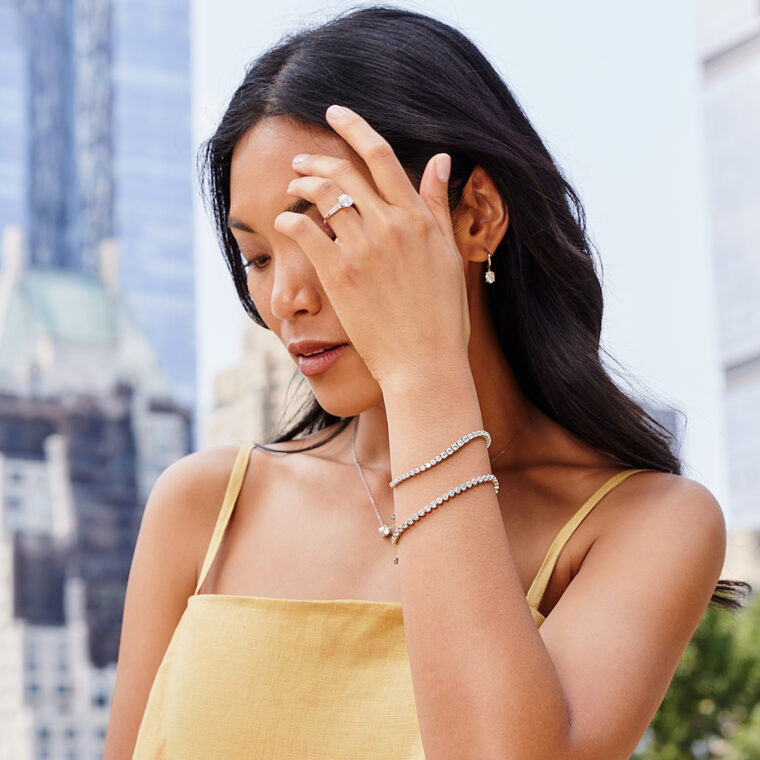The History of Engagement Rings: From Ancient Traditions to Modern Customs

Engagement rings are a universal symbol of commitment, love, and marriage. While this token of love seems like a more recent tradition, they’ve actually been around for thousands of years. The history of engagement rings is long, rich, and diverse. Various cultures and customs shaped this commitment of love. Keep reading to discover the origins of engagement rings and how the tradition has evolved over the years.
Ancient Origins
The earliest engagement rings can be traced to Rome and Egypt in the 2nd century BC and were originally used to show ownership. Early engagement rings used braided hemp, leather, or bone, according to the Gemological Society of America (GIA). Early Roman engagement rings were made of ivory, flint, bone, copper, or iron, and worn to show mutual love and obedience. Ancient Egyptians wore rings made of hemp or reeds. Egyptian Pharaohs first used rings to represent eternity. The circle shape matches the shape of the sun and the moon, important to their culture, and circles don’t have a beginning or an end. Archeologists discovered gold rings and jewelry in the Pompeii ruins, so eventually, gold replaced earlier jewelry materials.
Roman Influence
Ancient Romans introduced the tradition of betrothal rings. They were given two rings – one made of iron and the other made of gold, according to the GIA. The iron ring was worn indoors, and the gold version was worn outdoors. Rome is well known for their clasped hands motif (called the fede motif), which represented the holding of hands during a wedding ceremony and a promise of marriage.
Medieval Europe
During medieval times, Europeans began giving engagement rings with gemstones. Medieval Europeans used rubies to symbolize passion, sapphires to represent the heavens, and diamonds to symbolize steadfast strength, according to the GIA. It was also common for couples of this time period to exchange “posy rings” that were inscribed with romantic poetry or religious verses. Some rings also feature religious motifs, such as crosses. A well-known medieval ring is called the Gimmel ring. It features two or three interlocking bands that symbolize unity and fidelity. It’s said that each couple wore a single ring, and during the marriage ceremony, the two rings would become one that the bride would wear.
Renaissance and the Diamond’s Emergence
In 1477, Archduke Maximillian of Austria commissioned the first documented diamond engagement ring for his betrothed, Mary of Burgundy, according to the American Gem Society. The Archduke started a trend for diamond rings among European aristocracy and nobility. During the Renaissance period, diamond engagement rings became more popular and the designs became more creative. Settings featured more elaborate and ornate designs as well as multiple stones.
Modern Trends
Today, you’ll see more unique engagement rings made from a variety of metals. While diamonds remain a popular engagement ring option, you’ll see engagement rings made out of different colored gemstones and more non-traditional engagement rings. For example, you’ll find colored diamonds and gemstones as center stones in engagement rings or sprinkled along the band. Blue sapphires, pink diamonds, rubies, and yellow diamonds are all stunning options.
In addition to varying gemstones, you’ll see varying settings, from the classic solitaire to more ornate, elaborate settings. More couples and future brides seek engagement rings that reflect their own individuality and personal preferences. Some men and women even choose to custom design a ring that’s completely unique.
Ethical Considerations and Changing Traditions
Today’s brides also question the ethical concerns regarding diamond mining. This has led to more brides to be to choose lab-created diamond engagement rings. They’re an alternative and affordable option for those with ethical and eco-conscious sensibilities. Lab-created diamonds are ethically sourced and conflict-free so you can pinpoint the origin of lab-grown diamonds. Plus, they’re earth-friendly because the lab alternative has a smaller environmental impact. Mined diamonds have a larger impact on environments, landscapes, and communities.
Lab-grown diamonds share the same chemical composition, optical properties, and physical features as natural diamonds. Creating a lab-grown diamond is similar to creating natural diamonds – the only difference is that one occurs within the earth’s crust, and the other occurs in a laboratory.
Engagement rings and traditions will continue to evolve. You’ll likely see wedding ring tattoos and unconventional gemstones and metals in future engagement rings. Similarly, the meaning of engagement rings continues to evolve as relationships change over time. Engagement rings don’t always symbolize a future marriage because couples assign their own meaning to the ring. Some relationships are non-traditional, and couples want to create unique concepts for their engagement rings.
A Brilliant Evolution
Engagement rings have come a long way from the iron loops and braided hemp of ancient times. As the years went on, engagement rings became more ornate, featuring religious motifs and symbols until rings incorporated gemstones and diamonds into their designs. Today’s engagement rings are diverse – you’ll see traditional solitaires to more elaborate and non-traditional settings. But one thing will remain constant – engagement rings will remain a significant way to express individuality, ethical stances, and the uniqueness of a person and the couple.
